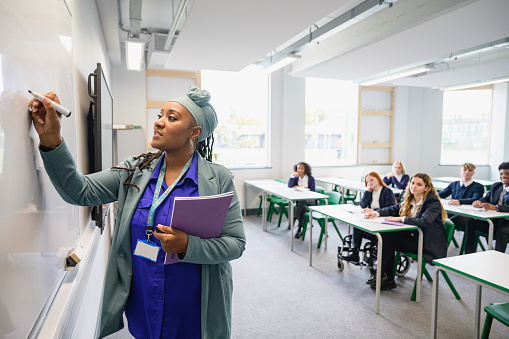Benefits of Personalized Learning and Incorporating Universal Design for Learning (UDL) for Student Success
What Are Personalized Learning and Universal Design for Learning (UDL)? Why Are They Important?
Personalized, or individualized, learning is a term that is often used in the world of education. But what does it mean? Essentially, personalized learning customizes instruction to meet the unique needs and preferences of each individual student.
Educators have long strived to meet the individual needs of their students while simultaneously covering the same standards that all students need to master. This is quite the task when considering that the average class size is 20+ students, and each student has their own unique learning needs.
Universal Design for Learning (UDL) is a research-based framework designed to improve and optimize teaching and learning. Authored by CAST, it tells us that learner variability is not the outlier but rather the norm and should be treated as such. We all have unique learner profiles and our “learning styles” can vary widely across disciplines, domains, and situations.
Differentiated instruction calls for teachers to tailor each lesson to the individual needs of each student. This can place a heavy burden on teachers as each student has a unique learner profile and there is no one-size-fits-all method of instruction. As educators, we want our students to be able to access the information they need to succeed and participate in learning experiences that are meaningful to them. This is why, rather than attempting to provide differentiation for a few students’ unique learning needs, we need to shift our perspective to offering instruction that is inclusive of all learning needs.
So, how is it possible to create these types of learning experiences for our students while making sure that they master their state standards? It’s necessary to look at the Why, What, and How of learning. When we think about Why students learn, we have to look at engagement: Are they interested? Can they sustain the effort and persistence required to complete their tasks? Do they have tools for self-regulation?
When we consider what students are learning, we have to look at representation. Since we know that perception and comprehension vary greatly among learners, we need to make sure that we are representing the information they need to know in a variety of ways. There is no one way to represent the information that will meet the needs of all students, which is why it is key that options are available. The ability to customize displays, audio, and visual representations of information, as well as clarifying language and symbols, are critical components of adequately representing information for all students.
When discussing the how of learning, we need to ask ourselves: How are students able to demonstrate what they have learned? Do we provide them with multiple means of action and expression? Do they have access to tools and assistive technologies? Are there different ways for them to demonstrate what they have learned as opposed to simply answering multiple choice questions? Do they receive adequate, personalized feedback? Can they monitor their own progress?
This may seem like a lot to consider when designing quality instruction. How do we personalize instruction to fit the Universal Design for Learning framework, while still ensuring that all required standards are covered throughout the school year? The good news is that quality, educational technology platforms can significantly help with this. Teachers can continue to focus on creating safe, effective, and welcoming learning environments while employing the help of technology to cover standards and provide optimal accessibility for all students and their unique needs.
How Progress Learning Can Help
Progress Learning provides teachers with quality, standards-aligned resources that can help them personalize learning experiences and offer accessibility to all of their students. Our platform is designed to ensure that students achieve mastery of their required state standards, while remaining engaged and working at their individual pace and level. We consider the Why, What, and How of learning and incorporate these into our tools to optimize both teaching and learning.
Our Progress Learning tools keep students engaged, interested, and invested in their own learning experiences. Students have autonomy in choosing the methods they use for individual practice and are able to track their own progress and feedback. This provides choice and opportunity for self-assessment and reflection. There are also tools available for representing information in both audio and visual formats as well as scaffolding lessons to guide information processing. It is essential that students have access to tools and assistive technology as these have become increasingly available on most state standardized assessments. Progress Learning’s Technology Enhanced Items or TEIs are available in the assessment/assignment builder and make it possible for teachers to create assessments that go beyond multiple choice and give students the opportunity to demonstrate their knowledge in different ways, more closely aligning with updated standardized summative assessments.
We also want students to have supported practice opportunities and options for monitoring their own progress. Our platform provides options for individualized skills practice and customized study plans so that students can meet their own individual learning goals and keep track of their progress.
Let Progress Learning equip your school or district with improved learning experiences for all of your students. Request a demo to find out more and start personalizing learning today.
Links
Read more on how to Turn Your Classroom Into a Personalized Learning Environment from ISTE, the International Society for Technology in Education
Explore the Universal Design for Learning framework from CAST


